So you want to work in the Pakistani film industry?
In 2016, when I was a 3rd year student I started working as a film publicity designer, which is someone who designs promotional material such as posters. I had fresh new ideas and had done my research. I had watched all the famous Netflix shows (I am a massive Game of Thrones, Breaking Bad fan). I hoped to launch into the local industry to change it.
What I discovered, however, was that project after project met the same fate. Every decision I made as a creative was challenged. I was forced to change the art so much that it always ended up looking stale. It looked like something someone had made before.
I was advised that as I was starting out I had to work a little to make connections and learn how the industry functioned before I could really make a change.
What no one told me is that there would be no room to change. I would just be exploited and stifled as an artist. My creativity would be killed.
Lesson 1: Don’t experiment
I discovered that the aim was to never create appealing designs. What I had to do instead was focus on whether the actress’s bare midriff was visible. I had to ensure no actor in the film poster had wrinkles. And as if I were making a political billboard, I had to ensure that the most famous actor’s face was positioned as the biggest.
Lesson 2: Don’t be real
I saw that decision-makers in the industry thought that plots centred on real-life stories were classified as Indie film and did not belong in mainstream cinema. These were plots that entertainment channels did not want to touch. The only requirement was famous faces. As a result, the industry mimics dynastic politics in Pakistan: you see the same old actors, same writers, same directors, and same channels produce the same kind of films over and over again.
Lesson 3: No actual filmmakers required
Why do most films look exactly like what we see on TV? We are clearly capable of so much more, for after all, Asim Abbasi produced Cake by, Shoaib Mansoor made Bol and Khuda Ke Liye and Jami did Moor—which people loved. Debut directorial projects such as Laal Kabootar by Kamal Khan and Pinky Memsaab by Shazia Ali Khan were a breath of fresh air. The difference is that these projects were made by actual filmmakers and not TV showrunners.
Lesson 4: Chase Bollywood
If we have learnt anything from our neighbors, it is that a superstar won’t save your film if the plot is rubbish. The Dabangg-Singham formula has stopped working. Theirs as well as our audiences now binge Money Heist.
They are hooked on to the Marvel Universe; they have Ozark, Bridgerton, You and an endless supply of K-dramas. Bollywood is slowly realizing this and is trying to produce more content-driven films and is branching out into unexplored genres for OTT platforms. Critically acclaimed projects like Made in Heaven, Ludo, Sir, Little Things, Thappad, Andhadhun and Pagglait are just some examples of that effort.
Lesson 5: Disconnect from the audience
Pakistan’s industry, on the other hand, is still producing the kind of unrealistic masala content Bollywood produced decades ago and around that time, our films still did decent business. The main factor then was that the content was made for those times.
But now it is 2022 and our films look exactly the same as those made in 1995, minus the shinier camera work. Why don’t they work anymore? Because audiences too now have access to OTT platforms like Netflix and Prime, free services like YouTube and a wide range of genres from all over the world at their fingertips. Audiences have outgrown the one genre that our films have to offer and that genre is The Shaadi (the big fat wedding). Bilal Lashari’s much awaited The Legend of Maula Jatt is still talked about after years of its trailer release because audiences want to see that kind of content.
“I think filmmakers need to understand who and where their audiences are and it’s not always essential that those audiences are sitting in the cinema. Their marketing and distribution strategies need to then stem from that understanding. One size does not fit all,” Pinky Memsaab director Shazia Ali Khan told me. “Worthwhile content usually finds its way, on the big screens, on the OTT platforms and even on YouTube.”
Lesson 6: The never-ending (beginning) revival
Some people argue that our industry is still “emerging” but the truth as I see it, is that we have been talking about a revival for the last 20 years. Perhaps an actual revival will emerge when we stop banning ‘risky’ projects like Zindagi Tamasha and Javed Iqbal: The Untold Story of A Serial Killer and allow more filmmakers to tell their stories. The bans have not robbed audiences of content with depth and have discouraged new filmmakers from emerging.
Vacillating censorship and perennial threats to ban YouTube and TikTok ensure that Pakistani content creators have been left miles behind international creators.
Filmmaker Ali Sohail Jaura: It’s ironic how people with talent don’t have resources but still take risks but people who have a lot of resources in this industry, don’t want to take risks and give talent a chance
Lesson 7: Do not trust new talent
Independent filmmakers start by trying their luck but when they realise that their hard work is not appreciated or rewarded with patronage or funding they either decide to move away or settle for working at advertising agencies. Only some of them persist and quietly send their work to film festivals because that is the only place where they can hope for some appreciation.
“It’s ironic how people with talent don’t have resources but still take risks but people who have a lot of resources in this industry, don’t want to take risks and give talent a chance,” filmmaker Ali Sohail Jaura told me.
More often than not, their work then ends up on YouTube, without ever hitting the big screen. Saim Sadiq’s Darling at Venice Film Festival, Ali Sohail Jaura’s Murder Tongue at 39th Miami Film Festival and Hamza Bangash’s Bhai have all won awards and recognition internationally, but will the same kind of content be welcomed on our cinemas?
Our channels and actors are the first to applaud films like Joyland by Saim Sadiq which are representing us at Cannes Film Festival, but when will films like it find space in our cinemas?
Unless the industry and its sponsors starts prioritizing Pakistani content with depth and stop expecting audiences to pity-watch local cinema, we don’t stand a chance against works like Doctor Strange or any other international films even though we can compete.
Umair Najeeb Khan is an illustrator, comic book artist and graphic designer @UmairNajeebKhan
For the latest news, follow us on Twitter @Aaj_Urdu. We are also on Facebook, Instagram and YouTube.




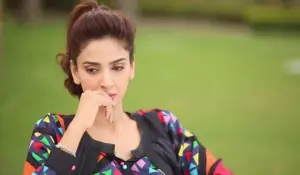



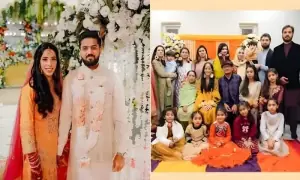


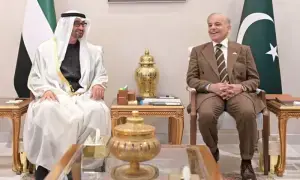





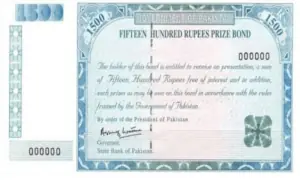

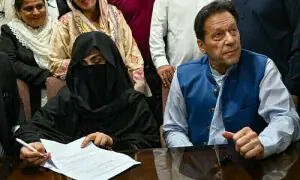


Comments are closed on this story.